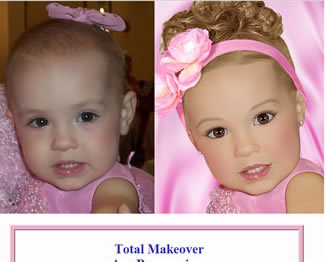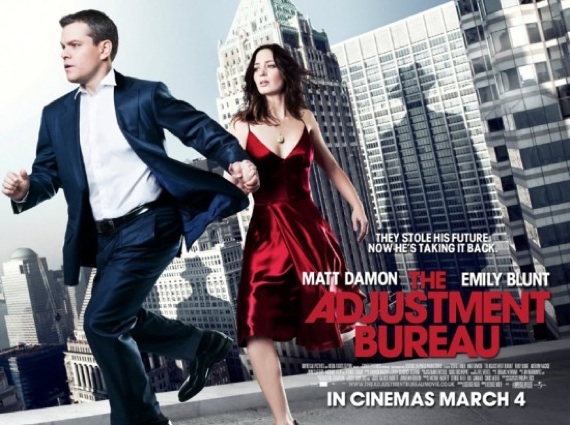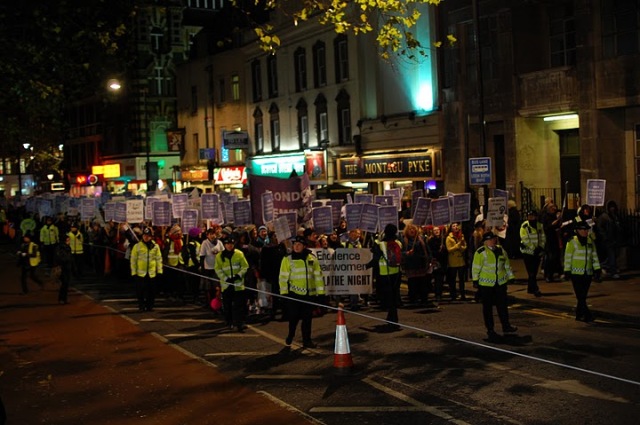Recently, ‘the sexualisation of children’ has become a catchphrase. Everyone seems to be worried about children being sexualised inappropriately, the commercialisation of children, and perhaps the most prominent example, the fact that Primark and other stores sell padded bras for six year old girls.
If you go into most shops that sell children’s clothes, it’s clear that the aim is to transform girls into mini-adults. Ugg boot lookalikes are growing increasingly popular, jeggings have been a trend and everything in the adult section has been made smaller to fit young girls.
But what seems to be missing in the discussion, is the way that it’s gendered and is part of a wider discourse that keeps women subordinate to men and dictates to young women at a very early age that they will never be attractive enough, they will never be sexy enough and they will never be thin enough.
Boys are simply not targetted in the same way as girls. Girls are targetted not only through clothes, but make-up, hair products, stationary, accessories and through continual low fat food adverts which tell primarily women that no matter what age they are or what is going on in their lives, they should be on a diet.

That isn’t to say boys are completely off the hook – far from it. They are presented with prescribed views masculinity which they should conform to at a young age; they should be violent and aggressive, technologically minded or sporty. This creates three main stereotypes presented in the media: the violent being shown through ridiculous male celebrity brawls and the aggression of Charlie Sheen, the Geek-chic stereotype which is suddenly hot, found in programmes such as The Big Bang Theory and the popularity of Michael Cera, and the sporty types shown through the emphasis that sport must have in every guy’s life. While these stereotypes are extremely restrictive and limiting, at least there is more than one mould of masculinity.
Young girls on the other hand are pressured with just one mould: to look aesthetically appealing. They are pressured to have the body of a supermodel, the face of Cheryl Cole and the hair from the L’Oreal adverts. Everything is based around appearance – basically, if you don’t look like you could be picked for a glamour model photo shoot, society deems you as a failure.
The limitations and extremity of what it means to be a female in the eyes of the media is extremely harming and damaging for young girls. This part of the discussion, however, has been mainly left out of the debate. ‘The Sex Education Show’ has drawn media attention to the issue through the focus on inappropriate children’s clothing and lads mags. But little else. Their campaign ‘Stop Pimping Our Kids’ has got people talking, but has left out the fact that the so-called sexualisation of children is gendered.
While it is good that there is discussion about how young girls are being pressured to look a certain way, marching into a single Matalan store and cutting up clothing and putting it in a bin is hardly effective. We are told that young girls shouldn’t face these pressures at such a young age, yet the presenters offer no alternative. We are told that young girls are growing up too quickly, that they will have to worry about heels and make up when they are older but this isn’t challenged.
They don’t explore the assumption that all women will groom themselves, with make-up, fake tan, heels and hair extensions. It is simply taken for granted that this is what all women do and the problem is what we can do to stop it from taking over the lives of girls age six.
Perhaps we can start by getting the message across to young girls, that this isn’t what they have to spend their life doing. That make up isn’t a neccessity, and they can do whatever the hell they like when they grow up instead of spending half their lives trying to fit the media’s stupid idea of what it means to be a woman. We need to be criticising the industries, not just for their padded bras, but for the way they maintain the limitations of femininity.
Perhaps if society stopped associating girls with the colour pink, pretty dresses and being sweet and spice and all things nice then girls wouldn’t face the pressure they do today to look and act in a prescribed feminine manner. Instead of seeing young girls as future sex objects, the fashion and beauty industry should see that girl children are the future and have more ambitions than to look pretty and be quiet.
The problem is the pornification of young girls, not the sexualisation. To say that it is a problem associated with sexuality is just to reinforce the idea that women must be pure and chaste. Young girls are sexual beings, there is nothing wrong with that. They should be allowed to explore their sexuality; what they shouldn’t be encouraged is to view their sexuality as a singular thing that conforms to what Playboy readers want to see.
While padded bras for girls seem to be the main focus in the discussion, shouldn’t we be asking ourselves why it is that young girls are and want to be wearing padded bras? I recently heard an argument for padded bras for girls that I hadn’t previously though of: that some girls wear them to hide the shape and size of their nipples during puberty to prevent from playground teasing.
Why should young girls feel ashamed of their bodies? Why are so many young girls too shy to talk about menstruation? Why is it, that female masturbation is a taboo subject (as I found in my school) yet for pubescent boys it is socially acceptable to spend most of their school day talking about wanking and watching porn on mobile phones?
The problem is not about children being sexual.The problem is the way how young children are expected to express their sexuality, how they are pressured to buy into industries which have such a heavy link to the porn industry. If sexuality was discussed more in the curriculum, in a safe and friendly environment and young girls were offered better role models then perhaps we would be in a different position.
From personal experience, I can see how young girls blindly buy into this pornificated industry. At age twelve I was buying thongs in Tammy Girl who actually offered thongs for girls around the age of seven near the counter with phrases such as ‘angel’ and cute love hearts. I didn’t see this as anything inappropriate. It was about growing up and wanting to be older. What I realise now, it that the wish to grow up grew from the only version of womanhood that society offered to me; a sex object to be passive and admired.
Perhaps if young girls were taught that most breasts on the covers of Lad’s Mag’s are fake, that some women spend their lives without make up and still succeed, that there is more than one view of womanhood, then we wouldn’t be in the mess we are now.

























